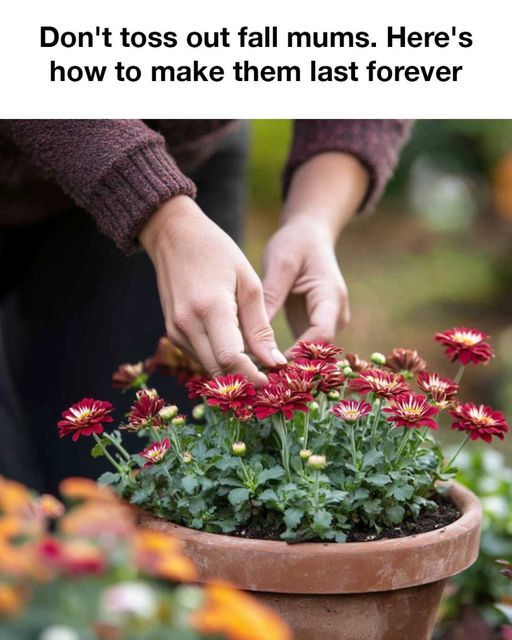Mums, or chrysanthemums, are the quintessential fall flower, adding vibrant colors to gardens and patios as summer blooms fade. Known for their wide variety of colors and shapes, they are a popular choice for autumn decor. However, many people treat mums as annuals, discarding them after a single season. With a little effort, you can enjoy these beauties year after year.
Understanding the Lifespan of Mums
Chrysanthemums are perennials, which means they can live for more than two years if properly cared for. Fall mums, in particular, can return each year, adding consistent beauty to your garden. However, their longevity depends on appropriate care before, during, and after their bloom period.
Advertisement
Selecting the Right Mums for Longevity
When selecting mums, choose hardy varieties known for their ability to withstand colder climates. Garden mums, as opposed to florist mums, are bred for outdoor conditions and are more likely to survive the winter. Look for healthy plants with robust, green foliage and no signs of disease.
Proper Planting Techniques for Fall Mums
The key to long-lasting mums starts with correct planting. It’s best to plant them in the spring so they have time to establish deep roots before winter. Choose a sunny location with well-draining soil. If planting in the fall, do it as early as possible to give roots time to develop before the first frost.
Watering and Fertilization Tips
Proper watering is crucial. Mums prefer consistently moist soil but avoid waterlogged conditions which can cause root rot. Mulching around the base helps retain moisture. Fertilize with a balanced, slow-release fertilizer in early spring and mid-summer to promote healthy growth and ample blooms.
Protecting Mums from Cold Weather
As cold weather approaches, take steps to protect your mums. Apply a thick layer of mulch after the first hard frost to insulate the roots. In extremely cold climates, consider covering the plants with burlap or a frost blanket to shield them from harsh winds and freezing temperatures.
Pruning and Deadheading Practices
Pruning mums encourages fuller plants and more blooms. Pinch back the stems in early summer when they reach about six inches tall. Stop pinching around mid-July to allow buds to form. Deadheading, or removing spent flowers, extends the blooming period by preventing seed formation and encourages new growth.
Continue Reading in next page
I didn’t know I could keep these forever

Pages: 1 2